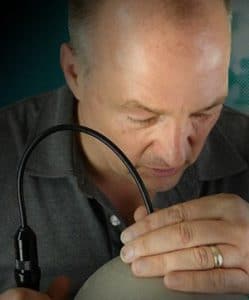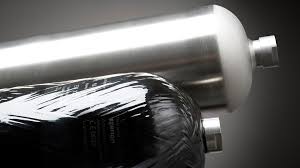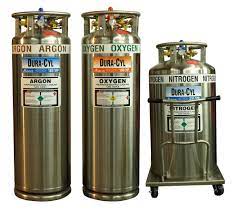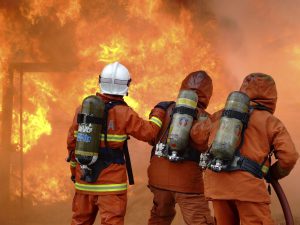Part 1 of 2
Don Kinney – Cylinder Training Services
Tony Pietrantonio
During our cylinder inspection training program we mention the explosive force of a high pressure cylinder. Since there are so many variables when calculating the force of an exploding cylinder we use a base average. The average we decided to use was the explosive force of two hand grenades. During the first of this two-part series we wanted to give you a perspective of all the variables required to determine the force of a rupturing cylinder. In the second part we will be covering the damage caused by the rupture and some ways to reduce the risk of injury or damage.
When trying to figure out the calculations used to determine the explosive force of a cylinder you must have a true love of mathematics. While researching the question of how much force or energy is generated with a ruptured cylinder we were shocked with the numerous variables required in the calculations. Here is an example of one such equation:
W = P0*V0 * (loge((P0*V0/(A*Pa))/(V0/A)) – A*Pa*(P0*V0/(A*Pa)-V0/A)
I tried my best to follow the numerous steps in running this calculation and got lost after the “=” sign. Luckily there are those of you out there that strive in this area. Others of us will need to rely on people like you for accuracy or just understand that there is a large amount of energy stored inside a cylinder.
Here are just some of the factors figured for the calculation:
The volume of the cylinder – the size of the cylinder
Cylinder content – what gas does the cylinder contain?
Energy being released slowly vs. rapidly – The speed in which the gas leaves the cylinder will determine its explosive force. A small leak will expend the same energy, but over a long period of time versus instantaneous.
Cylinder wall thickness – the wall thickness will affect the force
Cylinder material- Different types of materials will react differently to applications of force
Internal pressure – How much pressure is within the cylinder
Exterior pressure – how much pressure is outside the cylinder (air vs. water vs. open area vs. closed environment)
Temperature – how hot is the cylinder, how hot is the environment
After factoring in all these variables, the outcome you are trying to determine is the energy being generated. This is normally based on JOULES – which is a derived unit of energy which creates one watt of energy for one second. The number of joules in an aluminum scuba cylinder is approximately 1,242,000 joules, or enough energy to create 3kw of electricity for 7 minutes. That example does not tell us much. Even with that description, how does a person truly understand the explosive energy contained within the cylinder.
The method used to convert joules to explosive energy is by calculating the over-pressure generated with the TNT EQUIVALENT METHOD. We have some experience with TNT and have been able to determine its explosive effect so that standards can be used. It is a measurement that is simple, and a little easier to calculate, even though it is not as accurate. A metric ton of TNT (1,000 kg) is equivalent to 4.184 gigajoules.
A gram of TNT releases approximately 4184 joules of energy. A scuba cylinder produces approximately 1,762,563 joules or 421 grams of TNT (simple math – which even I can handle 1,762,563 J / 4184 J/g = 421 g). Since a hand grenade can contain approximately 240 grams of TNT that’s close to two hand grenades worth of explosive energy in a scuba cylinder.
As has been explained with the first equation, it’s not that simple due to the variables. Based on size, pressure, contents etc.…. the amount of force may be greater or less based on the variables. The best we can come up with is a generalization of approximately 2 hand grenades to give people an idea of the explosive energy. The hope is that with this base knowledge, and fear of exploding hand grenades, people will come to respect the cylinder.
During a formal visual inspection, the inspector needs to check for concerns or damage to the cylinder using proper tools and lighting. Any weakness within the cylinder may cause it to leak or rupture. Properly inspecting the entire cylinder will ensure the integrity of the cylinder and identify any potential concerns to prevent the 1,242,000 joules from escaping at a rapid pace.
In part two of this series we will discuss the effects of the explosion and how to try an minimize the damage.





